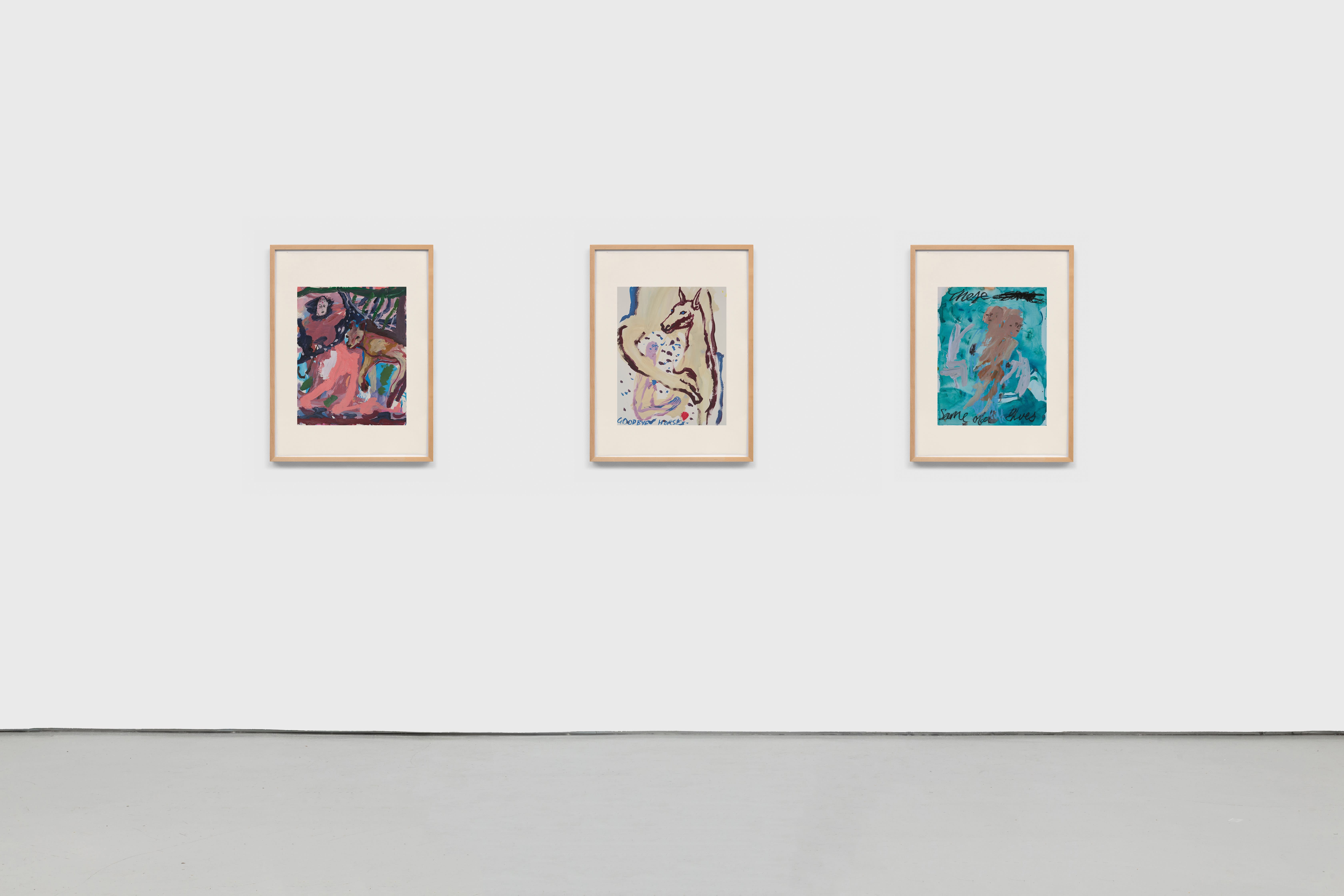
“Blue coming up from our roots, our water rising in our extraordinary limbs”
Ada Limón.
COMA is pleased to present a new suit of work on paper by Australian born, New York-based artist Renée Estée (b. 1993), titled ‘Sad waters, different oceans, secret fires.’ This will be an online presentation on.
Created during her time in Cornwall earlier this year for an artist residency at The Porthmeor Studios, St Ives, these paintings began at the sea. Nestled in the old town of St Ives, a seaside suburb in Cornwall, Estée spent every day looking out onto the ocean, at the confluence of depths and shallows, a site of drama and chaos, nature and sublime - her studio window, a porthole through which she watched herself set sail.
Intimate and deeply introspective, these works on paper are like pages torn from Estée’s personal diary – transcribing the tales and whispers of mermaids, giants and pirates, entwined in Cornish history and popular culture. Derived from tales of seafaring pirates and smugglers who thrived around Cornwall from the early modern period through to the 19th century, or stories of mythical creatures like, Buccas, Giants and Knockers, to explain frequent and deadly cave ins and the dramatic and unexpected landscape, Cornwall is a place rooted in myth and magic.
In ‘Sad waters, different oceans, secret fires 30’ the maroon stroke of paint, reminiscent of a boat, is obscured by a looming dark cloud emerging on the horizon, moments away from swallowing the vessel whole. Here, Estée calls the Cornish Tale of Bucca, a fable said that sea spirit mermen came to shore to inhabit coastal communities during stormy weather and help local fishermen by driving fish towards their net.
The ghost-like figures that sway and float between murky washes of oil paint seem to be caught between two moments – night and day, then and now, land and sea, real and imagined. They meander through uncharted waters exploring the oceans' dark folds, where mythical creatures sleep and shipwreck lay. Estée encourages us to connect to these mythological sentients and lead us toward other spaces beyond our immediate reality - like a siren she calls out to the corners of ourselves and our world yet to be discovered.
Estée’s restive marks and besmirched surfaces often conjure the imagery of water stains whilst also becoming hauntingly anthropomorphic. Through layers of paint and washes of colour that intersect and merge together, enclosed are hidden messages; secrets of an ancient coastal landscape and stories lost at sea. In ‘Sad waters, different oceans, secret fires 33’ the words, “then I will go with ye, for ye is where I belong” are loosely sprawled across the surface of the paper, referencing the final words the protagonist in the myth of the Mermaid of Zennor calls out before he submerges himself into the ocean to follow the Zennor Mermaid for an eternity. Here, we are reminded of Estée’s reverence for myth. Observing the drama and romance inherent to Cornish folklore, Estée recalls the vastness of the ocean as a site of emotional and physical subduction, and celebrates a connection between land, sea, people and myth.
In many ways, Estée’s paintings become votive offerings, acting as a homage to the mythical beasts and lost souls that dwell on the ocean floor. Similar to the residuum of seashells washed up by a wave, or a message in a bottle discovered years later, these works on paper act as remnants of mythic stories, and are Estée’s gift back to the sea. Crafted like a message in a bottle, rolled up and sent adrift at sea, stories of mermaids, gods and goddesses, pirates and fisherman are explored and the magic of these tales shared.

